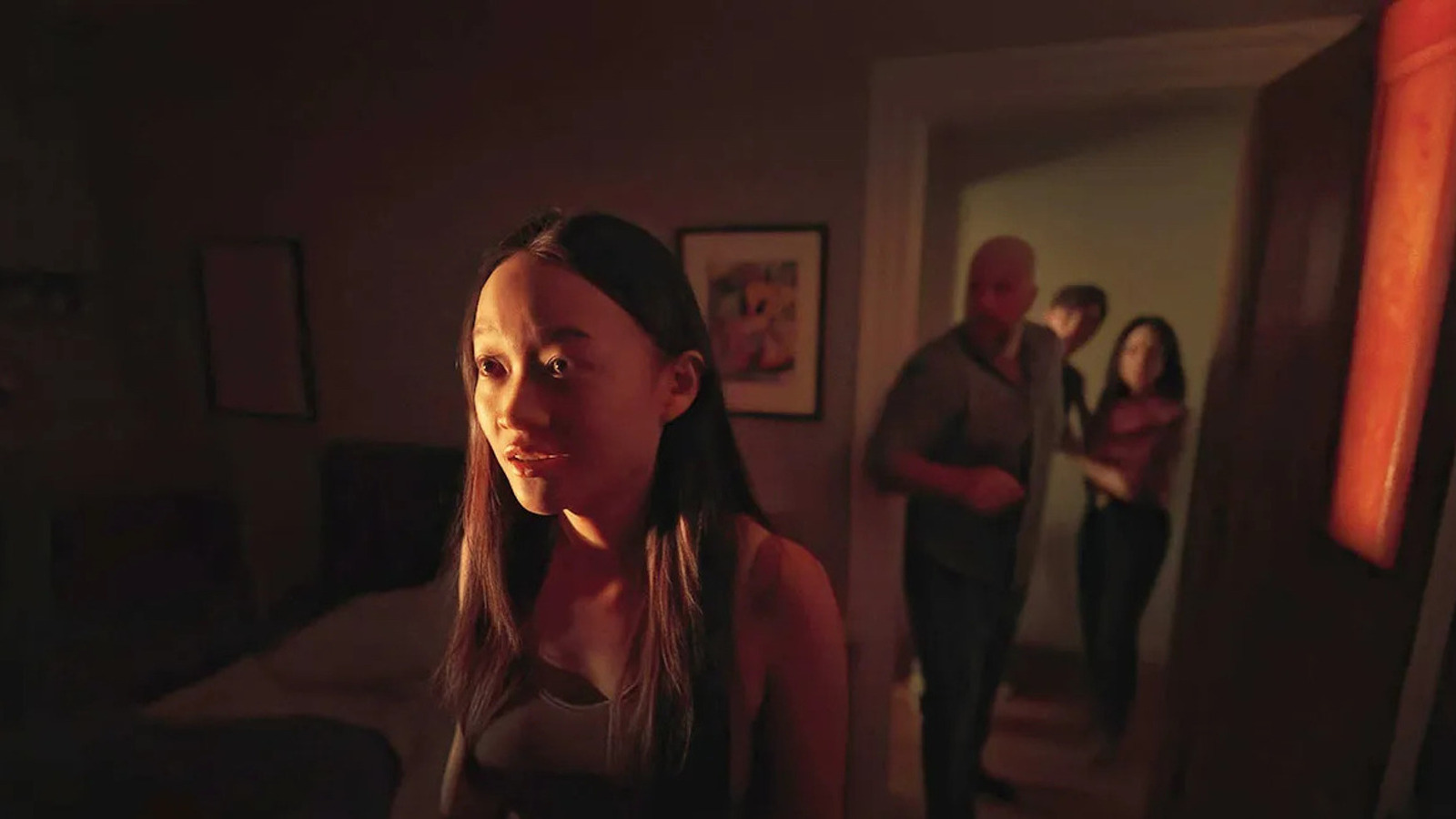
Like so many modern ghost stories (from “The Amityville Horror” to several entries in the “Paranormal Activity” series), “Presence” begins with a family purchasing a new house, making a deal that seems too good to be true. After purchasing their home from a sweet-talking real estate agent (played by Julia Fox), the family — mom Rebecca (Lucy Liu), dad Chris (Chris Sullivan), son Tyler (Eddy Maday), and daughter Chloe (Callina Liang) — move in and almost immediately begin having issues that have nothing at all to do with the supernatural presence watching them. Rebecca is involved with some type of illegal financial scheme that supposedly will benefit aspiring jock Tyler, Chris is quietly investigating whether or not it makes legal sense to divorce his wife, and Chloe is lonesomely dealing with the loss of one of her best friends, Nadia, a girl in town who died after apparently overdosing.
It’s during her solitary moments that Chloe begins to become aware of the presence that seems to be fixated on her, and while initially it’s possible that the ghost may not have her best intentions at heart, with each passing encounter it seems that it’s trying to look out for her. At the very least, it appears to be agitated whenever Tyler mistreats her, or when Tyler’s friend (West Mulholland) becomes her new secret boyfriend. From this, Chloe presumes that the entity in their house may be Nadia’s spirit, attempting to either achieve revenge for what may have been her murder or, alternatively, looking to simply not be forgotten.
The biggest element within Soderbergh’s filmography is the notion of confession — from “Sex, Lies, and Videotape” to “Kimi” (his prior collaboration with Koepp), his films feature characters telling the audience and/or each other their deepest secrets in various ways. The central gimmick of “Presence” allows this idea of the confessional to happen naturally: of course these people are speaking and acting frankly, because they have no idea that someone is watching them. That the “someone” is both a presence within the film and without it — i.e. us audience members — is something Soderbergh seems cognizant of throughout, and he blurs the lines between participant and viewer in a way that feels thrillingly Nouvelle Vague.
